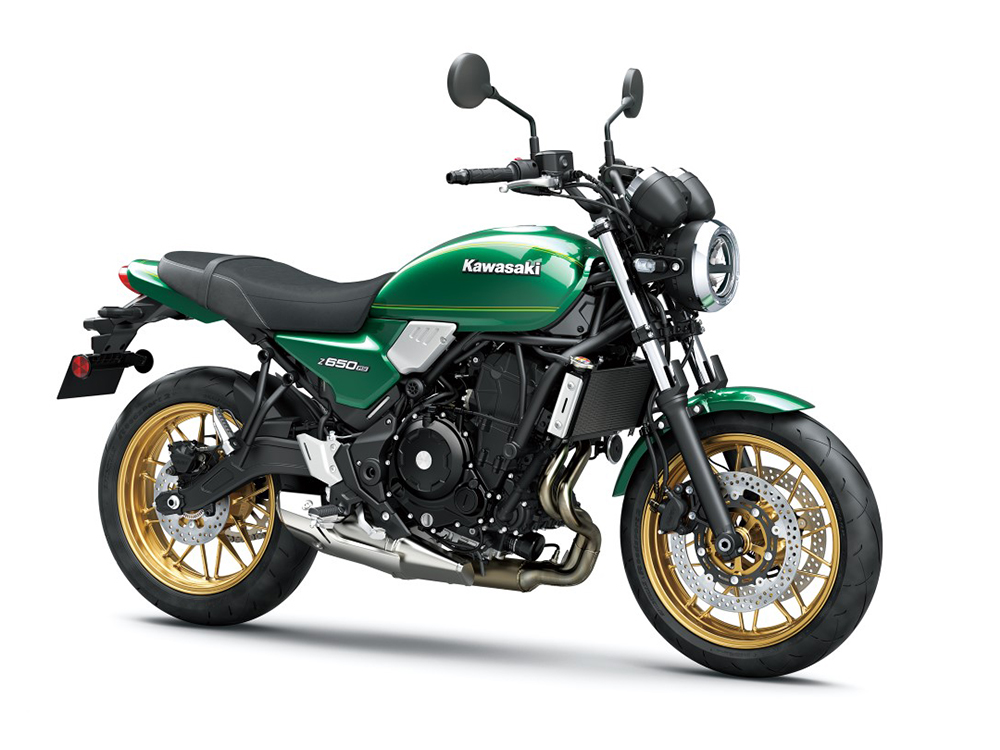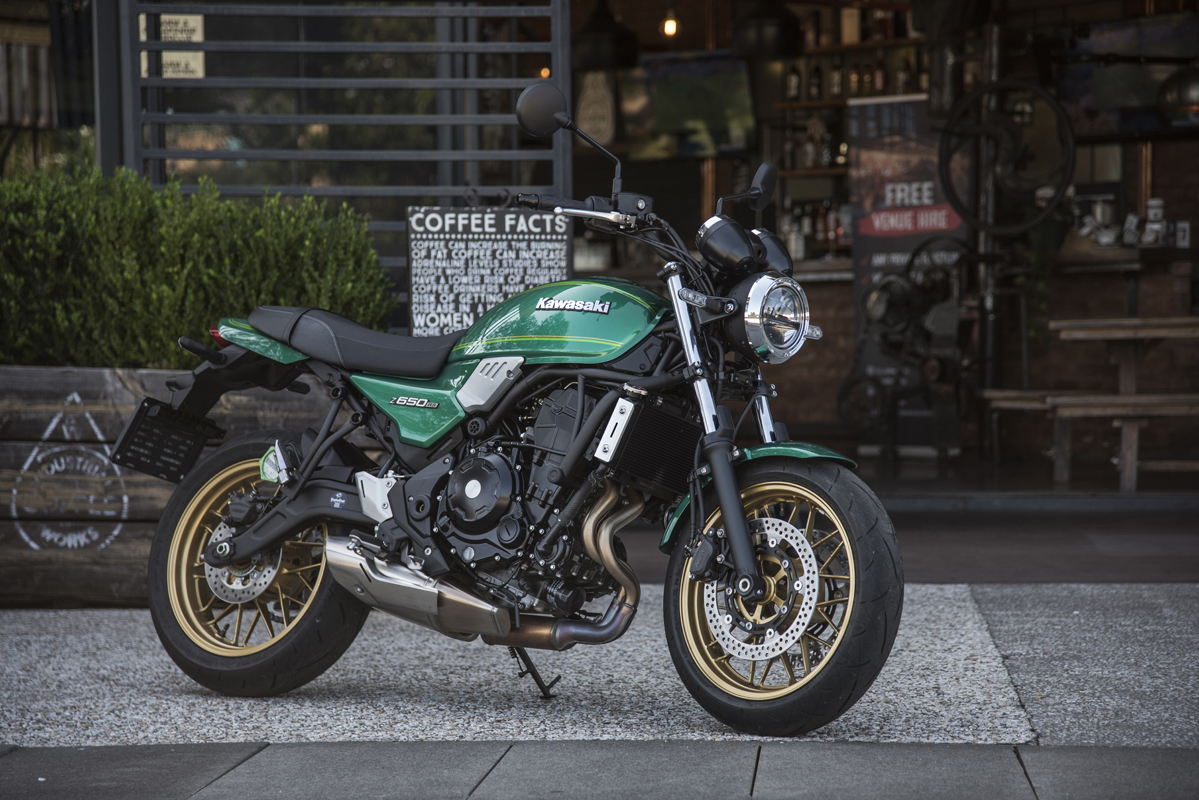
Kawasaki’s Modern Classics have huge boots to fill. The Z900 RS harks back to the mighty Z1, a bike that rewrote the standard for big street bike performance in its day. The Z650, in like fashion, rocked the bike world in 1976, when it delivered 750 cc performance in a much lighter and more agile package. The bike had a 652 cc 4-cylinder DOHC motor with 2 valves per cylinder. The motor churned out 66 hp at 8,500 rpm and made respectable torque of 57 Nm at 7,000 rpm. This was done without stressing the motor too much. It ran a conservative, by today’s standards, 9,5 to 1 compression ratio. It had a 5-speed gearbox, as was the norm in the ’70s.
Dudley Crammond, who regularly spanked the 750s, regularly spun the little Kawi to 10,000 rpm without ill effect. Unlike the 900, Kawasaki fitted the shims under the cam buckets. Although this required removing the cams to set the valve gaps, it allowed the motor to rev high without spitting a shim through the head, as was sometimes the case with the 900s when the redline was ignored.
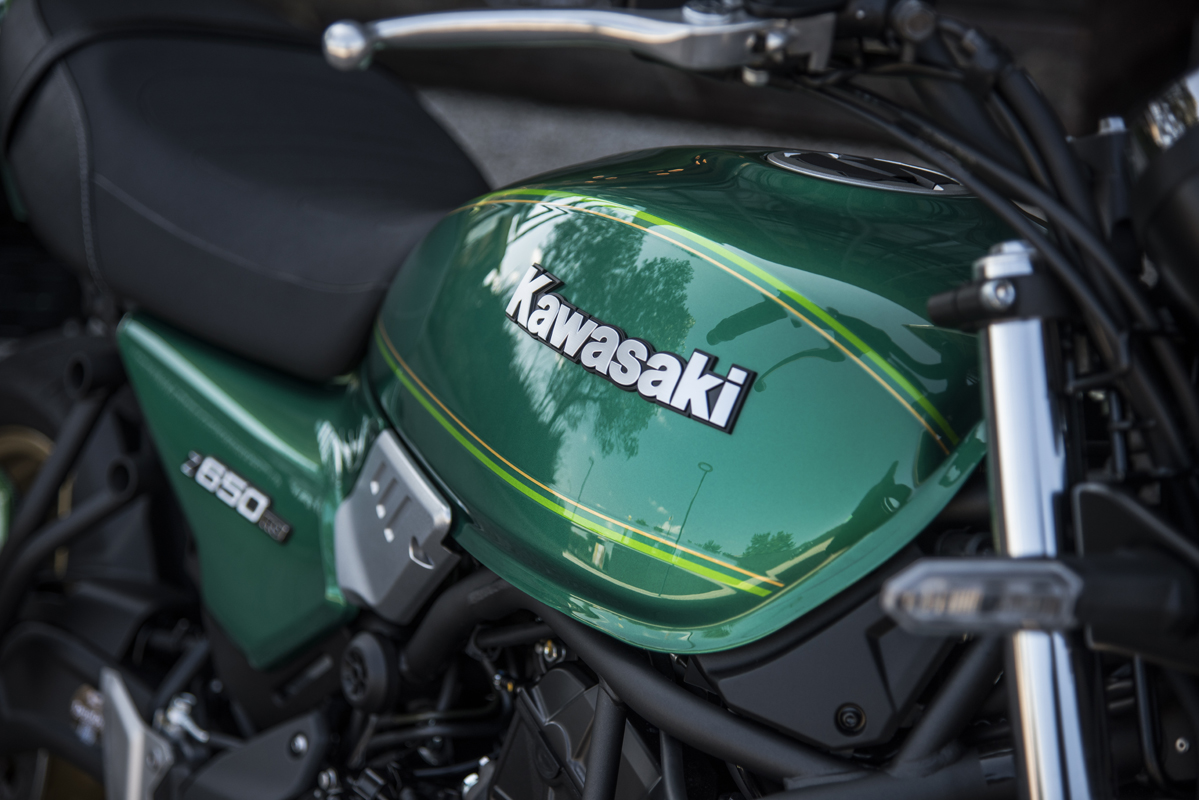
The little Kawi ran to 194 km/h, only 6 km/h slower than Suzuki’s GS750 and a mere 3 km/h slower than Honda’s CB750 F1. It gave nothing away on acceleration and the shorter wheelbase and overall stability made it a track weapon in the right hands. Internationally it also claimed the World 750 cc 1000 k record, averaging an incredible 208 km/h. The World 24hr endurance record for 750 cc machines was also broken by the Z650 at an average of 189,8 km/h. This illustrates the speed and reliability of the little Z.
Many modern-day buyers will be blissfully unaware of the illustrious history of this little Kawi. Still, for me, the Z650 RS brings back very fond memories. So, how much of the original Z650’s DNA is evident in the new Z650 RS? Well, it looks a lot like it’s Grand Pappy but that is really where it ends.
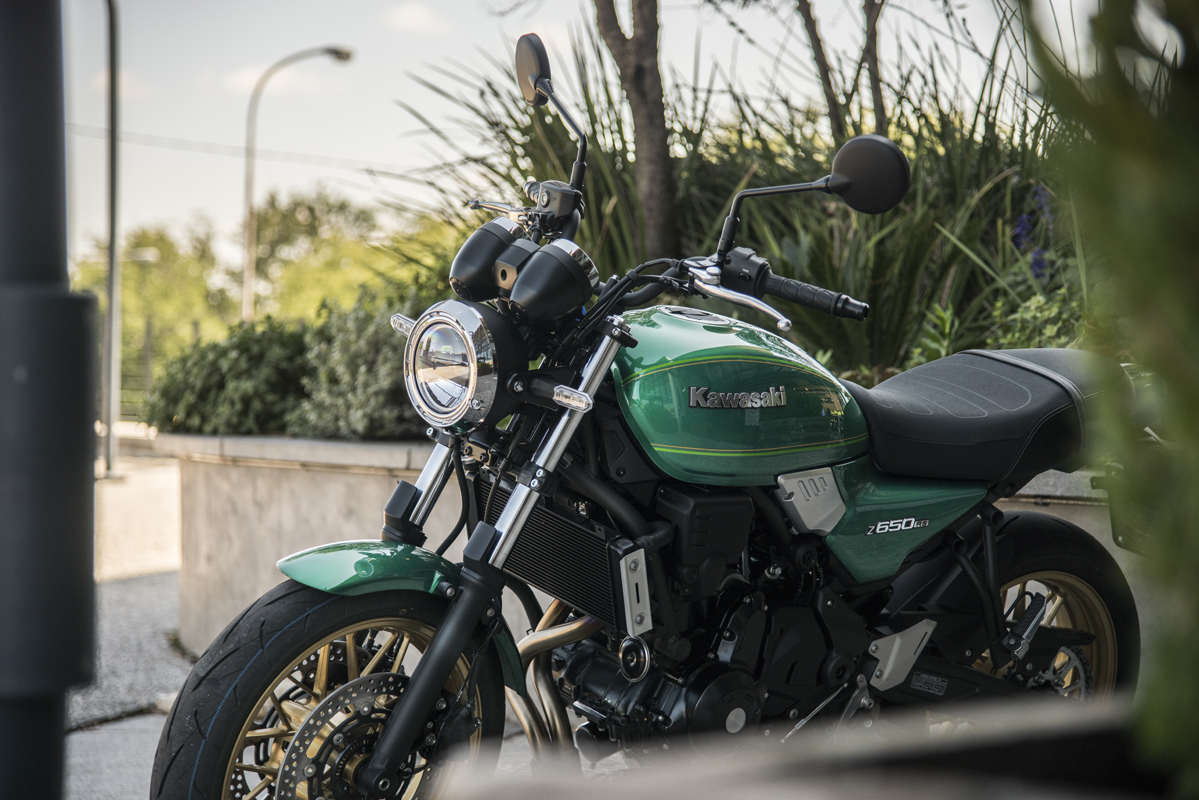
The Z650 RS has a lot more in common with the Sugomi-inspired Z650 and 650 Ninja. The motor is the familiar DOHC, 4-Valve, liquid-cooled parallel twin with 36 mm Fuel Injection throttle bodies. The 6-speed gearbox is light and crisp and a pleasure to use. Interestingly the motor is only marginally more powerful than the original Z with 67,3 hp@8000 rpm and 64 Nm@6700. The trellis steel frame uses the motor as a stressed member. The right-side-up forks have no adjustment and are 41 mm with 125 mm of travel. The rear shock is adjustable for preload only and gives 130 mm of travel.
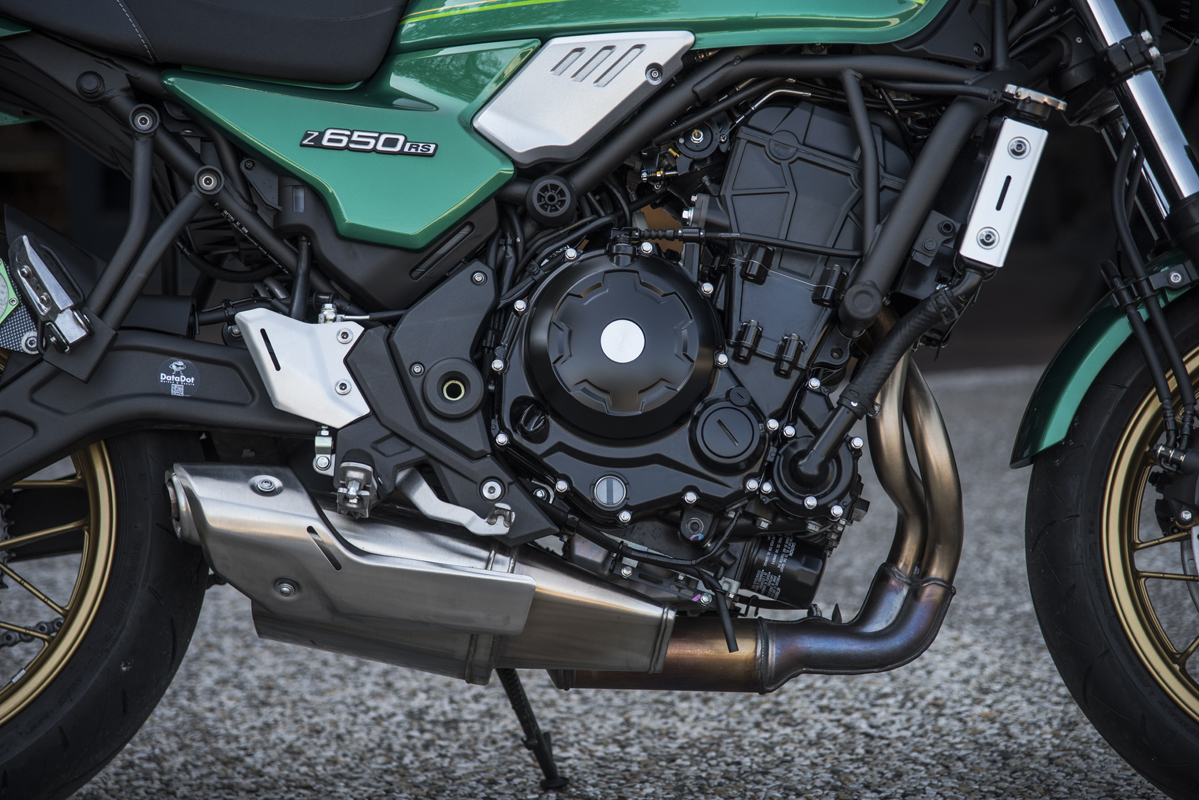
Brakes are light years ahead of the old Zed with its single 275 mm 1 pot disc and rear drum setup. Here we have twin 300 mm rotors with 2-piston callipers and a single 220 mm rear. The wheels are both handsome 17” gold alloys with a 160/60 at the back and a 120/70 in front. Seat height accommodates most riders at 820 mm. At 187 kg wet, with its 12-litre tank topped up, the RS is much lighter than the old Z which, although a lot lighter than the 750s of the day, was a porky 220 kg wet. It did, in fairness have a bigger 16.5-litre tank. So how does it ride?
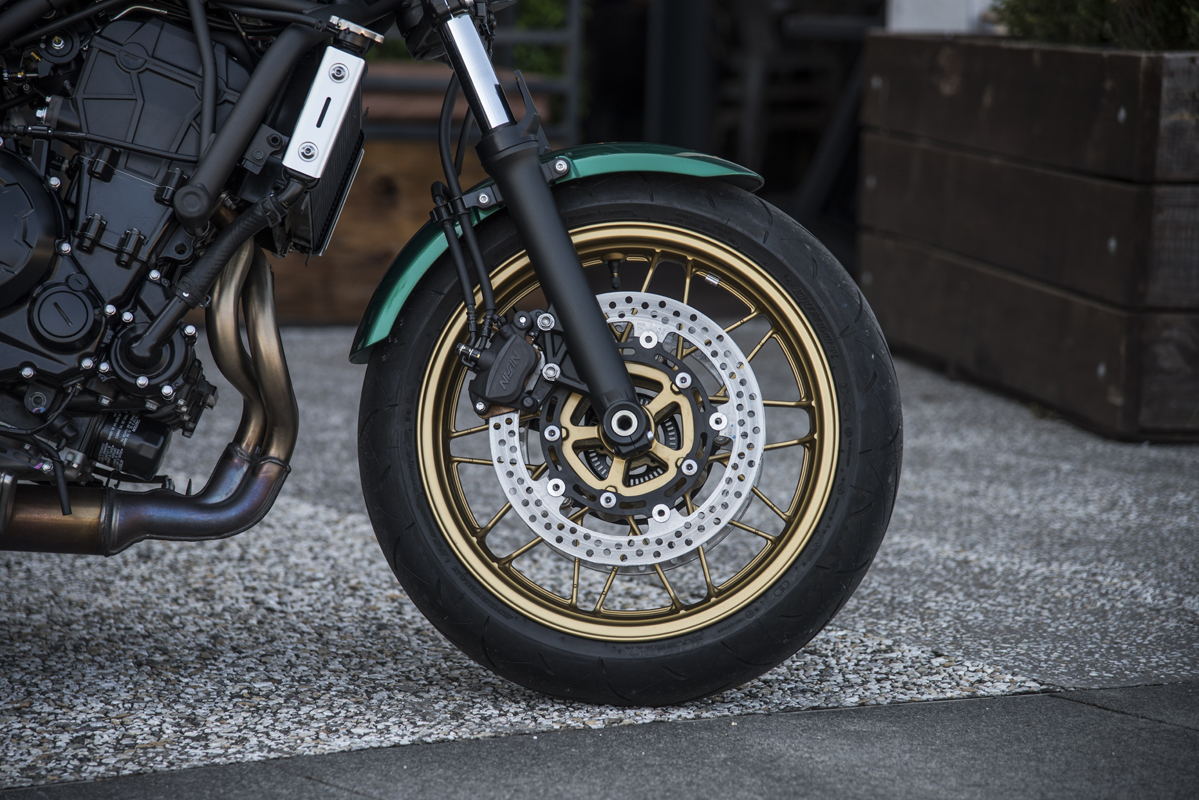
I remember the original Z650 being significantly smaller than the 750s. it was more comparable to a 500 Four Honda than a 750. The test bike was finished in a lustrous green metallic paint job with subtle pin striping. Very reminiscent of the old Zed. The silhouette is very similar, barring the fact that the silencer on the new 650 is tucked neatly under the motor whereas the original Z had twin exhaust cans bracketing the back wheel.
The motor is black, and the radiator is not too visually intrusive. The tank, seat, side covers, and tailpiece integrate nicely into a handsome and appealing modern classic package. As with its big brother, the clocks are analogue in the familiar ’80s fashion but with a digital panel between them achieving the best of both worlds. Handlebars are black with a slight rise.
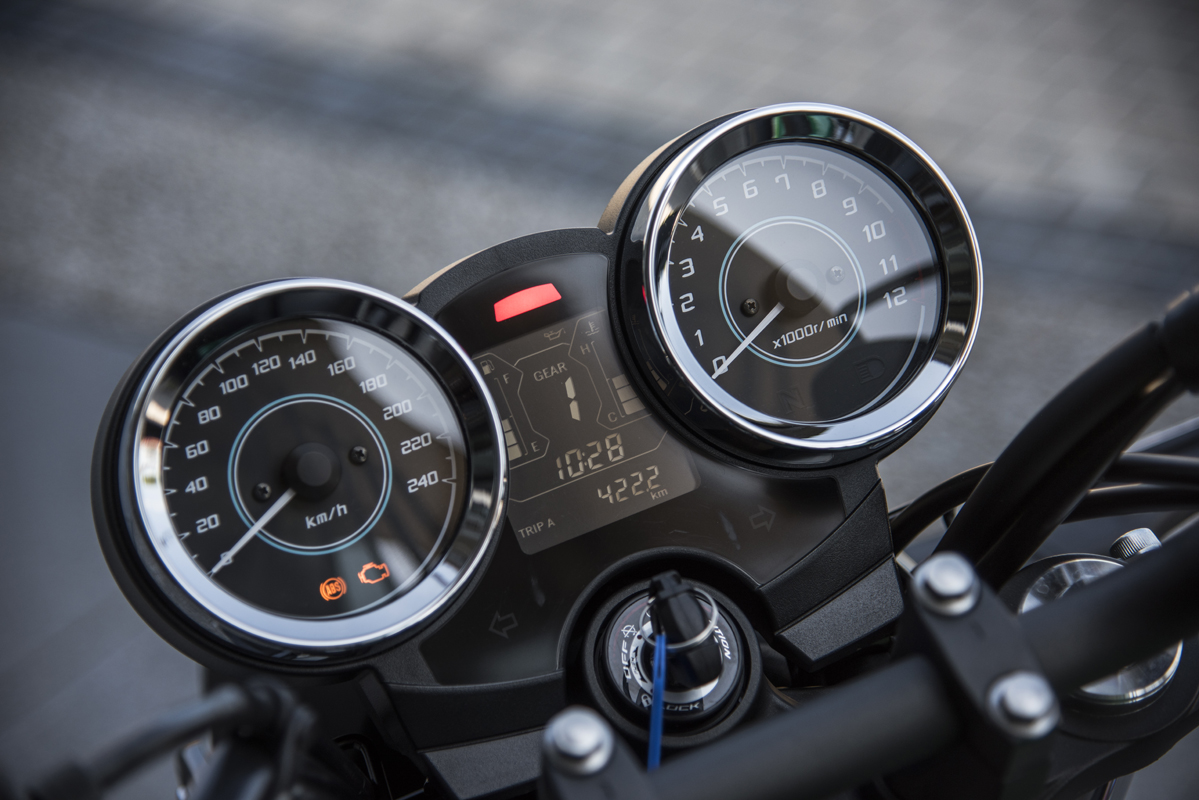
Sling a leg over the new Zed and it feels instantly comfortable. The seat is comfy, both in shape and foam density. I could smash huge days on this beastie without a numb bum. The bars encourage a slight forward lean without being at all “wristy”. As with any naked bike, the wind factor decreases comfort as speeds rise. Up to 120 km/h is a doddle. Perfect for inter-city commuting and in the urban sprawl. The lightweight and the lowish seat height of the bike make it effortless to negotiate traffic, aided by a tight turning circle. The torque off idle makes acceleration instant and the motor, with its over-square design, spin up keenly. You never feel a lack of go. Get hard on the gas and there is an audible honk from the intake as the Kawi lifts its skirt and runs. Vibes are pretty much unobtrusive right throughout the rev range just being at a level that reminds you that this is a proper bike and not some electric appliance, nudge nudge wink wink.
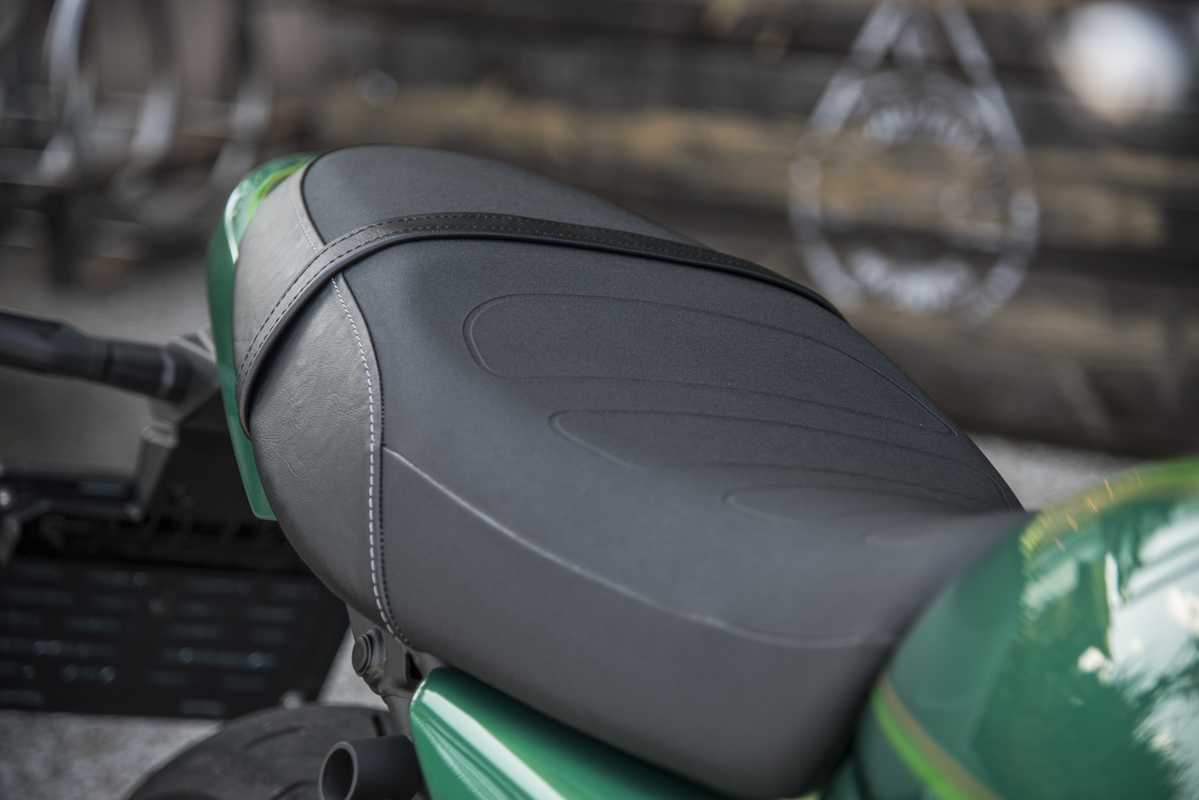
On the highway, the RS does not disappoint. It holds speed up the longest and steepest of hills whilst always still having something in reserve. Open a little more and off she goes. Overtaking is therefore a non-event. I must mention the suspension. Essentially there is no adjustment other than preload on the back shock, but this is a non-issue. Preload adjustment allows you to compensate for a passenger or to jack up the back a little to achieve better turn-in. The factory has dialled in the suspension superbly. It is soft and plush yet not wallowy.
Our roads put the suspension through its paces with many less-than-perfect surfaces. The Kawi manages to keep its composure over all these surfaces and yet still gives an excellent ride. Perhaps a racetrack would expose some suspension limitations, but that is ‘definitely’ not this bike’s natural environment. High-speed sweeps are negotiated with confidence. When suspension works this well you start to wonder if all the adjustment available on some bikes is a big deal. I don’t know many riders who fiddle with their shock settings other than the track day boys.
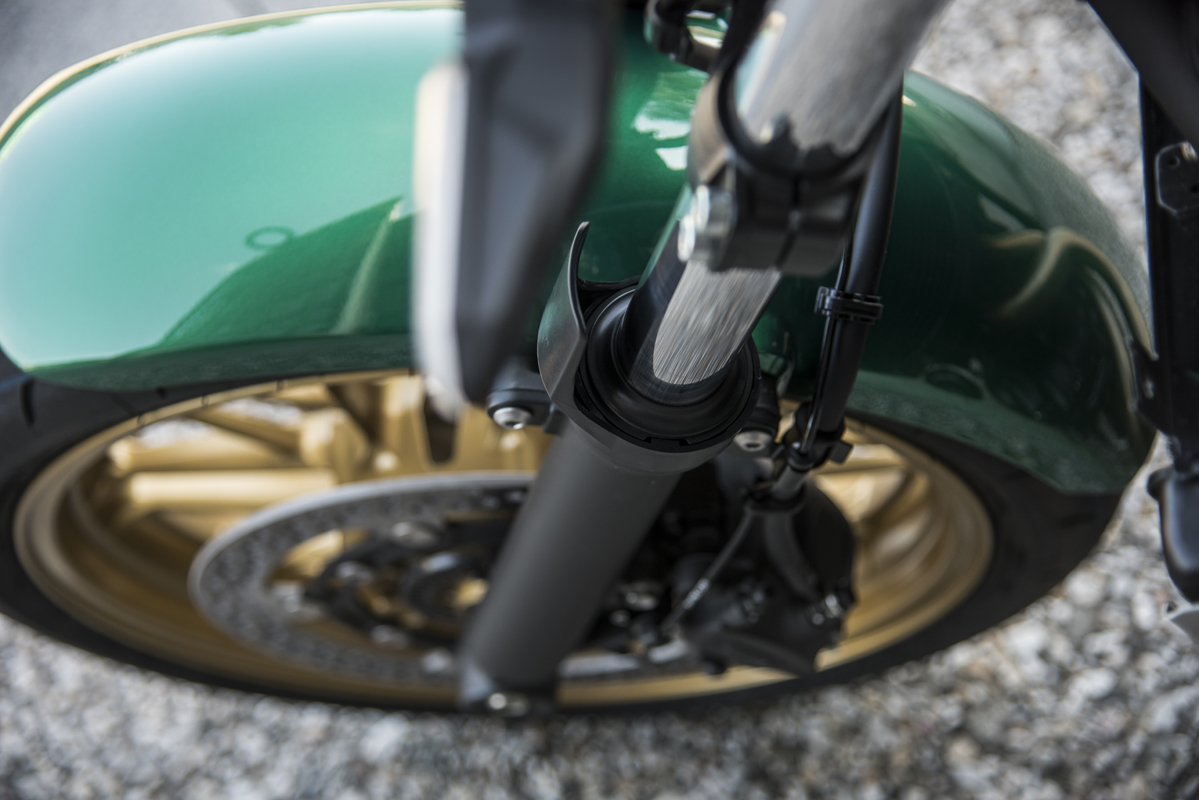
So what do we have in the Kawasaki Z650 then? A very good, thoroughly modern motorcycle. It looks amazing, works well for its intended application and we know from its Z650 and Ninja siblings that it will be reliable and economical. I thoroughly enjoyed my time with the Z650. The only reservations I have, and this is just old school Dave talking, is first that it is not a four-cylinder. This would properly pay homage to its phenomenal Grand Pappy. I get it though, that would not necessarily be as economically viable. The second issue is the price. Whilst not necessarily out of the ballpark. At R174,995, it is R10K more than the identical running gear Z650 Ninja which has a fairing and arguably should be the more expensive bike. Kawasaki did a superb styling job and some minor tweaks to an existing bike. So, it will be for each ‘individual’ buyer to decide if he is prepared to pay a premium for a Z650 in bell bottoms.
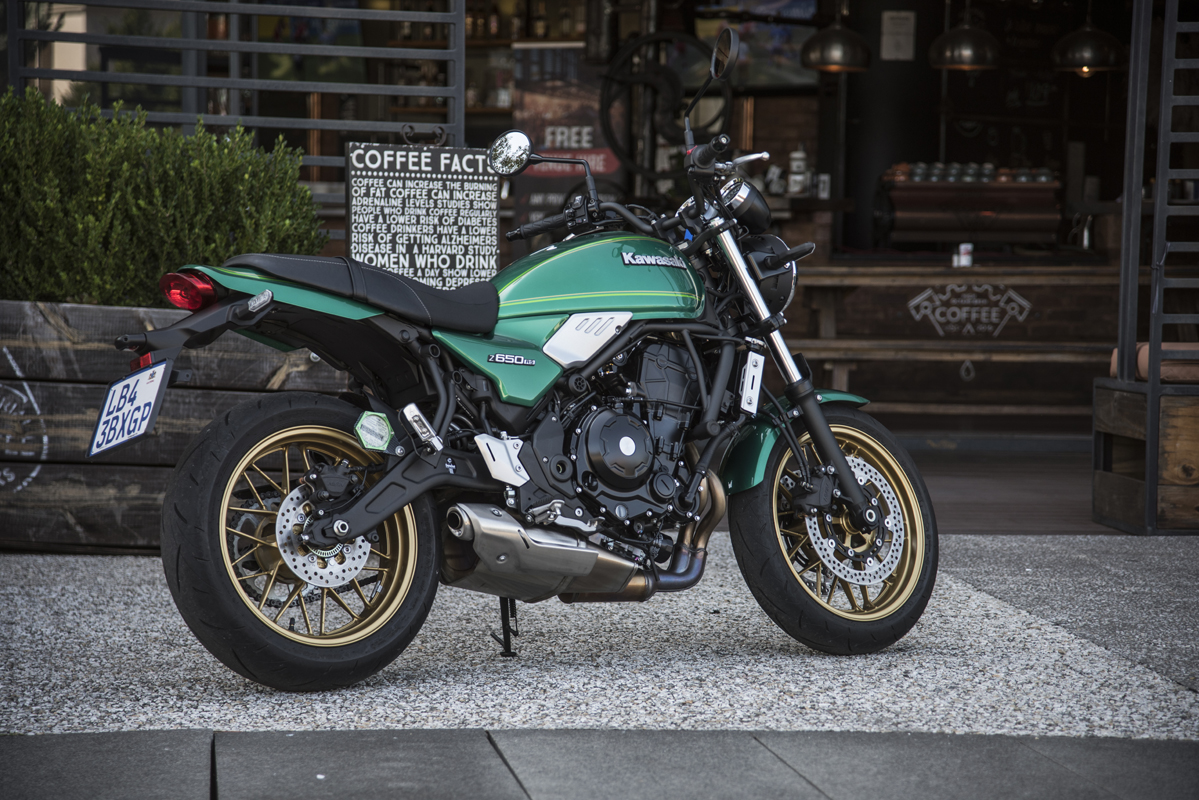
Kawasaki Z650 RS
For more information on the bike featured in this article, click on the link below…





